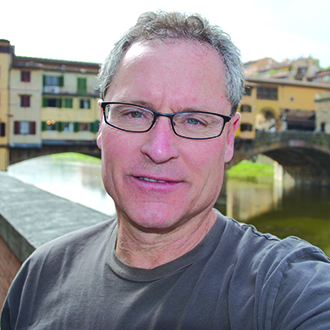As will happen when land prices escalate, acreage becomes scarce and suitable grape planting areas are tapped out, wine producers start to explore other areas for expansion.
Tuscan producers are looking no further than a couple of hours by car mostly to the south and west, still in Tuscany. The area south of Montalcino and extending almost to the Mediterranean coastline is comprised of the coastal Morellino di Scansano and the inland, elevated Montecucco wine regions and is broadly known as the Maremma. Their wine histories extend well back to the Etruscan and Roman civilizations, both of which planted grapes and other agriculture extensively. Then the Roman Empire fell and neglected drainage areas backed up, turning fields into marshland, while summertime malaria epidemics made the lower-lying Morellino di Scansano seasonally a place to avoid.
These regions are different from the Tuscany I know. There are no highways and essentially no industry within them. All the towns are connected by small two-lane country roads, barely big enough for a couple of cars to pass comfortably. The cities and towns are considerably smaller. There are now many vineyards, the majority of them planted in the past two or three decades. And there are grey and silver-green olive groves dotting the long and distant hillside views. Most of the houses are small, rustic and homey.
But there is money flowing into the region. Lots of it. There are massive wine producers long established in other wine regions, notably Cecchi and Frescobaldi (Tenuto dell’Ammiraglia in Morellino di Scansano) and the titled Count Ferdinando Guicciardini of Chianti’s Castello di Poppiano (Massi di Mandorlaia in Morellino di Scansano), who have bought up large tracts of land, some under vine and some to be planted. There are boutique-style producers, Alberto Tanzini of Roccapesta and Giovan Battista Basile of Basile, both of whom migrated from other careers, finance and law respectively, to chase (and catch) a dream. There is Sergio Peteglia of Peteglia winery. He grew up locally and from his hillside winery told me, “Mom was born in that yellow house over there. Dad was born in that house on that hill up there.” Peteglia’s production is small, just 30,000 bottles a year. There are some unfinished building projects on the estate. He and his team also sell beef and olives and when money comes in, they fire up construction again and move the winery closer to their dream.
And there is Claudio Tipa of ColleMassari winery and president of the Montecucco consortio, who has made an attractive fortune in pharmaceuticals and has just put the finishing touches on a gorgeous from-the-ground-up winery in Montecucco. Tipa is the region’s largest producer by volume and has the ability, commitment and influence to improve the wines, transform the region and raise the bar and reputation for all the producers of the area.
The rules are rather new and simple. Morellino di Scansano was granted Denominazione di Origine Controllata status in 1978 and Denominazione di Origine Controllata e Garantita (DOCG), Italy’s highest designation, in 2007. Morellino di Scansano DOCG must be made from 85 percent Sangiovese, or Morellino as the grape is locally known. All the grapes used must be grown in the region. Montecucco received its DOCG designation in 2011 and the wine must contain a minimum of 90 percent Sangiovese. Both regions produce DOC, DOCG and Riserva wines with minimum aging and oak requirements. And there are rules dictating vineyard yields. Smaller yields create a more nuanced grape with more depth and complexity.
Virtually all the producers of the Maremma are moving toward biodynamic, organic and earth-friendly production and carbon-neutral methods. Both regions also make white wines and rosatos and some of the producers also make a Vin Santo, a sweet and delicious dessert wine. Vin Santo wines are labor intensive, require longer oak time and rarely turn a profit. But it’s part of the Tuscan heritage and family members often insist on it as a requirement in the winery.
On a recent trip to the region, we tasted red wines, many of which were very pleasant, fruit- forward and value-driven vintages that will stand up to and enhance most any dinner party. The wines’ fresh fruit approach leaned toward red or black cherry. The better wines showed hints of currants with oak time contributing a spiciness, tobacco and leather flavors and a dusty or velvety texture in the mouth. Delicious.
Write me at doug@dougpaulding.com.


